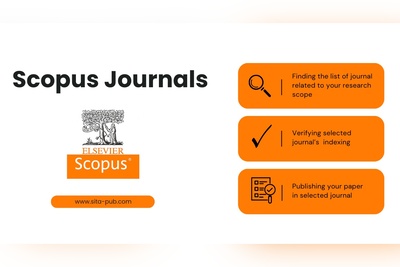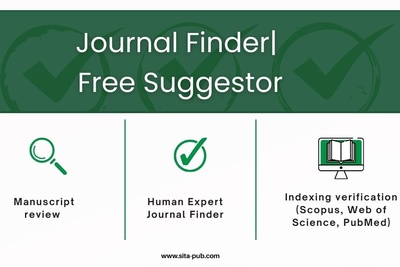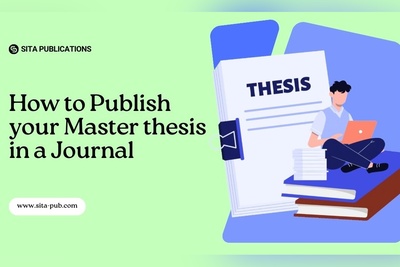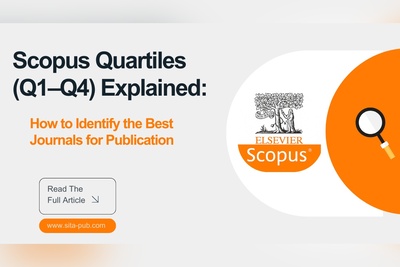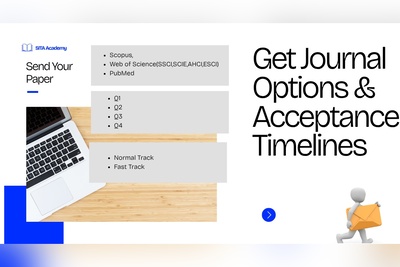Q1 vs Q2 vs Q3 vs Q4Journals: How to Decide Where to Submit Your Paper
Learn the difference between Q1, Q2, Q3, and Q4 journals in Scopus and Web of Science. Understand quartile rankings, acceptance rates, publication speed, fees, and how to choose the right journal for your research. Practical guide for researchers with expert tips.
- What Are Q1, Q2, Q3, and Q4 Journals?
- How Are Quartiles Determined?
- Differences Between Q1–Q4 Journals: What Actually Matters
- Differences Between Q1–Q4 Journals: What Actually Matters (Comparison Table)
- How to Check the Quartile Ranking of a Journal
- Which Quartile Should You Choose? Practical Scenarios
- Final Tips for Choosing the Right Quartile
- Need Help Choosing Between Q1–Q4 Journals?

For any researcher preparing to submit a manuscript—whether to Scopus or Web of Science (WoS) journals—the journal’s quartile ranking (Q1, Q2, Q3, Q4) is one of the most important indicators to consider. These rankings reflect the journal’s influence, citation impact, and competitiveness. But many researchers still ask:
What exactly is the difference between Q1, Q2, Q3, and Q4 journals?
Which quartile should I choose for my research?
Are Q1 journals always the best option?
Does publication speed differ across quartiles?
What about publication fees and acceptance rates?
This article explains everything you need to know—and provides practical tips to help you choose the right journal for your publication goal.
What Are Q1, Q2, Q3, and Q4 Journals?
Journal quartiles divide academic journals into four categories (Q1–Q4) based on their impact and ranking within a specific subject area.
Quartiles apply to both Scopus-indexed and Web of Science-indexed journals.
■ Q1 Journals (Top 25%
These are the highest-impact, most reputable journals in their field.
Characteristics:
Very competitive
High citation impact
Lower acceptance rates
Often longer review times
High academic value (promotion, funding, academic ranking)
Best for:
High-quality, novel, strong research papers.
■ Q2 Journals (25%–50%)
These are strong, reputable journals but slightly less competitive than Q1.
Characteristics:
Good citation impact
Moderate acceptance rates
Balanced review timeline
Strong academic recognition
Best for:
Good-quality studies with solid methodology and clear contributions.
■ Q3 Journals (50%–75%)
These journals maintain academic quality but are more accessible.
Characteristics:
Higher acceptance rates
Faster publication timelines
Less citation impact compared to Q1/Q2
Ideal for authors looking for quicker publication
Best for:
Mid-level research, practical studies, time-sensitive submissions.
■ Q4 Journals (Bottom 25%)
These are entry-level journals in the indexing list.
Characteristics:
Highest acceptance rates
Often the fastest review and publication process
Lower impact and citation metrics
Suitable for graduation or basic publication requirements
Best for:
Beginner researchers, urgent deadlines, or mandatory publication requirements.
How Are Quartiles Determined?
Quartiles depend on the ranking of a journal within its subject category, based on metrics like:
CiteScore (Scopus)
SJR (SCImago Journal Rank)
Impact Factor (Web of Science)
Citation metrics
Editorial and scholarly influence
Each indexing system uses different formulas, but the principle is the same:
Q1 = highest ranked, Q4 = lowest ranked.

Differences Between Q1–Q4 Journals: What Actually Matters
Researchers typically focus on five key aspects:
1. Publication Fees
Many assume Q1 journals charge more, but that is not always true.
Scopus Journals
Q1 & Q2 Open Access: $1,000–$3,000+
Q3 & Q4 Open Access: $300–$2000
Traditional Scopus journals may be free across all quartiles.
Web of Science Journals
SCIE/SSCI (Q1 & Q2): Usually higher APC fees
ESCI (mostly Q3/Q4): Moderate or low fees
Important:
Quartile does not determine fee — the open access model does.
2. Publication Speed & Review Timeline
Q1 Journals
Slowest review process (8–20+ weeks)
Multiple rounds of revisions
Very detailed peer review
Q2 Journals
Moderate review speed
Balanced between rigor and efficiency
Q3 & Q4 Journals
Faster peer review (3–8 weeks)
Often selected for urgent deadlines
More predictable timelines
If speed matters, Q3/Q4 journals are usually the best option.
3. Acceptance Rate
General Trend:
Q1: 5–20%
Q2: 20–35%
Q3: 35–55%
Q4: 55–75%
The higher the quartile, the more competitive the journal.
4. Suitability for Academic Requirements
For university promotion:
Q1 / Q2 (Scopus or Web of Science)
For graduation:
Q1–Q4 depending on policy
(ESCI and Scopus Q3/Q4 often accepted)
For fast publication:
Q3 / Q4
(especially in Scopus & ESCI)
Differences Between Q1–Q4 Journals: What Actually Matters (Comparison Table)
Criteria | Q1 Journals | Q2 Journals | Q3 Journals | Q4 Journals |
Impact & Prestige | ⭐⭐⭐⭐⭐ Highest impact, top 25% | ⭐⭐⭐⭐ High impact, top 25–50% | ⭐⭐⭐ Moderate impact | ⭐⭐ Entry-level impact |
Likelihood of Acceptance | Very Low (Highly competitive) | Low–Moderate | Moderate–High | High (most flexible) |
Peer Review Speed | Slowest (3–12 months) | Moderate (2–6 months) | Faster (1–3 months) | Fastest (2–8 weeks) |
Publication Timeline | Longest | Moderate | Fast | Very Fast |
Publication Fee | May be higher (if open access) | Moderate | Lower | Usually lower |
Suitable For | Strong, novel, high-impact studies | Solid research with good methodology | Applied or descriptive studies | Early-career researchers, deadline-driven submissions |
Chance of Desk Rejection | Very High | High | Moderate | Low |
Indexing | Scopus / WoS (SCI/SSCI) | Scopus / WoS (SCI/SSCI) | Scopus / WoS | Scopus / WoS (including ESCI) |
Use in Academic Promotion | Most preferred | Highly preferred | Accepted in most universities | Accepted but weighted lower |
Publishing Goal Match | Prestige, career advancement | Strong academic CV | Consistent publication record | Graduation requirements / fast publishing |
Reviewer Expectations | Extremely strict | Strict | Balanced | Practical and less strict |
How to Check the Quartile Ranking of a Journal
Checking a journal’s quartile is essential to avoid misinformation or predatory journals.

If the journal is indexed in Scopus:
Use SCImago Journal Rank (SJR):
Steps:
Go to: https://www.scimagojr.com
Search the journal name
View:
Subject categories
Quartile (Q1–Q4)
SJR metric
Citation statistics
SJR assigns quartiles based on the journal's ranking within its category.
If the journal is indexed in Web of Science:
You need access to the Journal Citation Reports (JCR).
Steps:
Log in to Web of Science (institution access needed)
Open "Journal Citation Reports"
Search for the journal
Check:
Quartile ranking
Impact Factor
Categories
Which Quartile Should You Choose? Practical Scenarios
Here are clear guidelines to decide:
Choose Q1 if:
Your research is highly novel
You want maximum global visibility
You have time (long review process)
You need publication for academic promotion
Choose Q2 if:
Your paper is solid but not groundbreaking
You want a balance between prestige and acceptance
You prefer a moderate review timeline
Choose Q3 if:
You need publication within a few months
You want reasonable acceptance probability
Your study is practical, industry-based, or mid-level research
Choose Q4 if:
You need fast publication
You are a beginner researcher
You need a paper for graduation requirements
Your university accepts Q4 journals
You want the lowest APC fees
Final Tips for Choosing the Right Quartile
1. Understand your goal clearly
Do you want:
Fast publication?
Academic promotion?
University graduation requirement?
High prestige?
Your goal determines the quartile.
2. Match the journal to the quality of your paper
Not all manuscripts are suitable for Q1/Q2 journals.
Choosing a journal above your paper’s level leads to rejection and delays.
3. Check indexing carefully
Many predatory journals falsely claim Q1–Q4 ranking.
Always verify using SJR or JCR.
4. Consider timeline and deadlines
If you need publication within 1–3 months, choose Q3 or Q4.
5. Ask for professional journal recommendation
Experts can match your paper to the right journal quartile, indexing, and acceptance probability.

Need Help Choosing Between Q1–Q4 Journals?
At SITA Academy, we provide:
Accurate journal quartile verification
Journal recommendation based on your paper
Formatting to journal guidelines
Plagiarism check & removal
Professional English editing
Full submission and publication assistance
Scopus & Web of Science (SCI, SCIE, SSCI, ESCI) journals
Whether your goal is fast publication or top-tier journals, we can guide you to the right option.

Verified Contact Channels
If you have any questions, inquiries, or would like to learn more about our services, please don't hesitate to reach out to us. Our dedicated team is ready to assist you.





